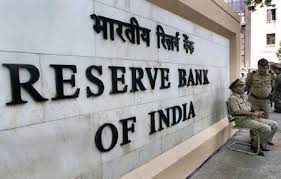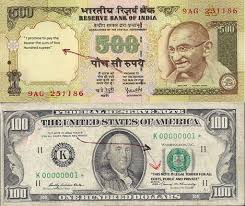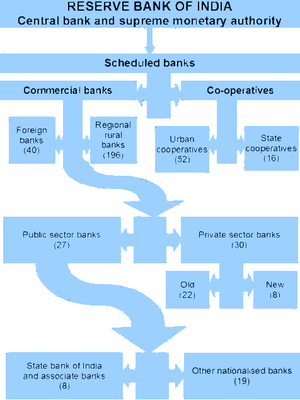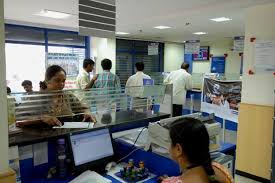Difference between revisions of "Banking"
m (removed Category:Commercial Arithmetic using HotCat) |
|||
| (17 intermediate revisions by 5 users not shown) | |||
| Line 1: | Line 1: | ||
| + | <div style="width:150px;border:none; border-radius:10px;box-shadow: 5px 5px 5px #888888; background:#ffffff; vertical-align:top; text-align:center; padding:5px;"> | ||
| + | ''[http://karnatakaeducation.org.in/KOER/index.php/ಬ್ಯಾಂಕ್_ವ್ಯವಸ್ಥೆ ಕನ್ನಡದಲ್ಲಿ ನೋಡಿ]''</div> | ||
| + | |||
<!-- This portal was created using subst:box portal skeleton --> | <!-- This portal was created using subst:box portal skeleton --> | ||
<!-- BANNER ACROSS TOP OF PAGE --> | <!-- BANNER ACROSS TOP OF PAGE --> | ||
| Line 18: | Line 21: | ||
|} | |} | ||
While creating a resource page, please click here for a resource creation [http://karnatakaeducation.org.in/KOER/en/index.php/Resource_Creation_Checklist '''checklist''']. | While creating a resource page, please click here for a resource creation [http://karnatakaeducation.org.in/KOER/en/index.php/Resource_Creation_Checklist '''checklist''']. | ||
| − | + | =cocept map= | |
| − | + | [[File:BANKING.mm|Flash]] | |
= Textbook = | = Textbook = | ||
| Line 78: | Line 81: | ||
[[solution]] | [[solution]] | ||
[[http://karnatakaeducation.org.in/KOER/en/index.php/ Banking]] | [[http://karnatakaeducation.org.in/KOER/en/index.php/ Banking]] | ||
| + | Exercise 2.2.5<br> | ||
| + | 4. Prahalad invests a sum of money in a bank and gets Rs 3307.5 and Rs3472.87 in and 3rd years respectively. Find the sum he invested.[[http://karnatakaeducation.org.in/KOER/en/index.php/Mathematics_Solved_problems#Banking| click hear]] | ||
= Project Ideas = | = Project Ideas = | ||
| + | = Math Fun = | ||
| − | + | [[Category:Banking]] | |
| − | |||
| − | |||
| − | |||
| − | |||
| − | |||
| − | |||
| − | |||
| − | |||
| − | |||
| − | |||
| − | |||
| − | |||
| − | |||
| − | |||
| − | |||
| − | |||
| − | |||
| − | |||
| − | |||
| − | |||
| − | |||
| − | |||
| − | |||
| − | |||
| − | |||
| − | |||
| − | |||
| − | |||
| − | |||
| − | |||
| − | |||
| − | |||
| − | |||
| − | |||
| − | |||
| − | |||
| − | |||
| − | |||
| − | |||
| − | |||
| − | |||
| − | |||
| − | |||
| − | |||
| − | |||
| − | |||
| − | |||
Latest revision as of 14:37, 29 October 2019
| Philosophy of Mathematics |
While creating a resource page, please click here for a resource creation checklist.
cocept map
Textbook
Please click here for Karnataka and other text books.
Additional Information
Useful websites
to know more about the history of bank click hear http://en.wikipedia.org/wiki/Banking_in_India
Reference Books
Teaching Outlines
Concept .1.Introduction
Learning objectives
Notes for teachers
These are short notes that the teacher wants to share about the concept, any locally relevant information, specific instructions on what kind of methodology used and common misconceptions/mistakes.
Activities
- Activity No #1 Introduction - visit to a bank ===
- Activity No #2 Concept Name - Activity No.
Concept #2. Banking
Learning objectives
Notes for teachers
These are short notes that the teacher wants to share about the concept, any locally relevant information, specific instructions on what kind of methodology used and common misconceptions/mistakes.
Concept #3. saving bank account
Learning objectives
Notes for teachers
These are short notes that the teacher wants to share about the concept, any locally relevant information, specific instructions on what kind of methodology used and common misconceptions/mistakes.
Concept #4.Types of saving bank account
Learning objectives
Notes for teachers
These are short notes that the teacher wants to share about the concept, any locally relevant information, specific instructions on what kind of methodology used and common misconceptions/mistakes.
Learning objectives
Notes for teachers
These are short notes that the teacher wants to share about the concept, any locally relevant information, specific instructions on what kind of methodology used and common misconceptions/mistakes.
Concept #6.calcutation of interest in SB account
Learning objectives
Notes for teachers
These are short notes that the teacher wants to share about the concept, any locally relevant information, specific instructions on what kind of methodology used and common misconceptions/mistakes.
Activities
- Activity No #1 Concept Name - Activity No.
- Activity No #2 Concept Name - Activity No.
Assessment activities for CCE
Hints for difficult problems
Exercise 2.2.5
The difference between compound and simple interest on a certain sum for 2 years is 7½ % per annum is Rs 360. Find the sum .Verify the answer.
solution
[Banking]
Exercise 2.2.5
4. Prahalad invests a sum of money in a bank and gets Rs 3307.5 and Rs3472.87 in and 3rd years respectively. Find the sum he invested.[click hear]



